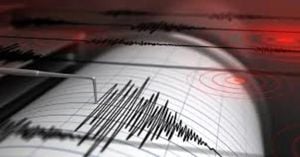On October 3, 2024, history was made as the Polaris Dawn mission marked the first-ever private spacewalk, showcasing how commercial ventures are reshaping the future of space exploration. This ambitious mission, financed by billionaire Jared Isaacman, who previously funded the Inspiration4 mission, sent him and three crew members thousands of kilometers away from Earth. The Polaris Dawn crew, comprised of engineers and former astronauts, undertook this innovative venture onboard SpaceX's Crew Dragon spacecraft, taking humanity one step closer to commercial space travel.
Jared Isaacman, accompanied by engineers Anna Menon and Sarah Gillis, as well as pilot Scott Poteet, ascended to new heights. They were propelled beyond Earth's atmosphere to achieve something previously reserved for experienced astronauts. Isaacman, upon stepping out of the capsule, remarked, "Back at home, we all have a lot of work to do. But from here, Earth sure looks like a perfect world." This encapsulated the astonishing experience of witnessing our planet from space, something many of us can only dream of.
What made this mission particularly notable was the significance of the spacewalk itself, often referred to as extra-vehicular activity (EVA). For decades, such activities were limited to trained astronauts. Yet here was Isaacman, stepping out of the Dragon capsule, breaking barriers and demonstrating the evolution of space travel. While some may view this as merely another sensational publicity event for billionaires, it is undeniably a stepping stone to commercial spaceflight.
The team prepared for the spacewalk by depressurizing the capsule to transition safely to outside conditions. With the entire crew suited up in SpaceX’s new spacewalking suits, every precaution was taken to safeguard them, including oxygen supplied through cords connected to the Crew Dragon system. Initially set to last 30 minutes, the actual time spent outside the capsule was significantly shorter, yet it was steeped in purpose. The primary goal was to evaluate the functionality of the suits—something hoped to be used for future missions to Mars and beyond.
Despite the brief nature of their EVA, Isaacman and Gillis successfully tested their movement, stretching their limbs as part of the assessment of their gear. The success of this mission signifies the potential of commercial space companies, and experts like Martin Barstow, professor of astrophysics at the University of Leicester, have pointed out the exciting leap forward this event presents. Barstow emphasized how partnerships between commercial entities, such as SpaceX, indicate where human exploration could be headed.
Reflecting on the experience, both crew members returned safely with no reported incidents or complications during the brief EVA. Amid advancements and lofty ambitions, the situation still holds many risks, especially when considering the historical background of spacewalks. Spacewalks have not always been as seamless as they might appear now.
Historically, the first-ever EVA was conducted during the Voskhod 2 mission by cosmonaut Alexei Leonov back in March 1965. Leonov faced dire circumstances during his brief time outside the spacecraft, struggling with equipment and the risks of space. He spent just over twelve minutes battling issues, including overheating and suit malfunctions, demonstrating the inherent dangers of space travel.
Another noteworthy predicament occurred three months later during the Gemini 4 mission. Astronaut Ed White's anxiety climbed when he encountered hatch difficulties during his EVA, but with the assistance of fellow astronaut James McDivitt, White managed to secure the hatch again after his space excursion.
These instances of past EVAS remind us of the significant evolution and innovation present with today's missions. Unlike the struggles faced by earlier astronauts, Isaacman’s adventure took place under the guise of modern technology and intensive planning, with significantly improved suits to manage the risks involved.
Despite the excitement surrounding the success of the Polaris Dawn mission, skeptics voice concerns over the simplicity of the spacewalk. Critics have pointed out how the method, where crew members merely stuck their upper bodies out of the capsule without fully exiting, left much to be desired. It was, after all, merely their heads and shoulders peeking out, which some may argue doesn’t quite compare to true spacewalking. The complexity surrounding this venture is embedded within the limitations and procedural protocols set by SpaceX.
Nevertheless, nothing overshadowed the lustrous moment when the hatch opened, marking the successful entry of private individuals venturing outside their spacecraft. The event sent ripples of energy through those tuned in to the live stream, eagerly awaiting each step of the unprecedented outing.
Now at the forefront, SpaceX carries the torch aiming for future possibilities. The experiences gained from Polaris Dawn will certainly inform the parameters of upcoming missions. Plans are already being discussed for more extensive EVA activities, including ensuring astronauts can perform tasks outside of the Dragon capsule—something many are very eager to see realized.
Despite the brevity of their stay outside the capsule, it's clear Isaacman and his team have opened up fascinating doorways to the future. The Polaris Dawn mission emphasizes how commercial space travel is becoming closer to reality, making it possible for civilians to feel the thrill of space exploration, complemented by organizations like SpaceX pushing the envelope forward.
All eyes will be on Polaris as it continues to redefine space exploration. With continuous advancements and testing, the next chapter of humanity's space odyssey is undoubtedly closer than ever.



